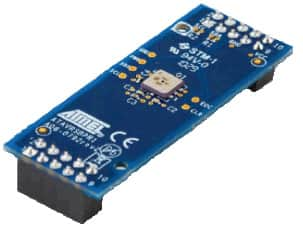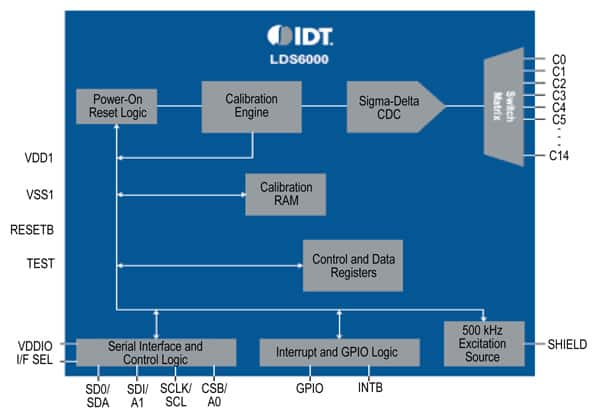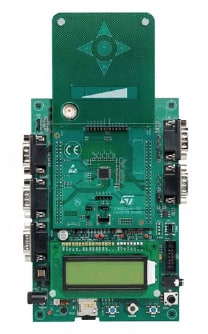Evaluating Touch Sensors Using Highly Integrated Dev Kits, Boards, and ICs
投稿人:电子产品
2012-12-06
Touchscreen technologies were rapidly propelled onto the scene by the introduction of Apple’s iPhone and iPad. Now part and parcel of many consumer devices, touchscreens are on practically every phone on the street. Apple may have started the momentum, but once the devices hit the shelves, evolving application software and operating systems have continued to meet the touchscreen support challenge.
Beyond mobile phones, MP3 players, and similar consumer products, touch sensors are finding their way into all sorts of applications, especially with advances taking the technology further into gesture recognition. Touchscreens today are lighter, sleeker, and continue to move toward edgeless designs so that they can be used on curved surfaces and edges – delivering touch capability in product shapes not previously possible.
With mechanical buttons giving way to touch-based activation at an accelerating pace, confirmation of the successful performance and integration of multiple sensors, MCUs, software, and controller ICs, in turn, becomes an increasingly important part of the engineer’s task.
That is where evaluation boards come into play. For example, the Atmel AVR development boards (Figure 1) and software are plug-compatible with Atmel Xplained MCU boards, delivering a wide range of performance depending on application requirements. To accelerate development with these sensor-based solutions, Atmel makes the necessary sensor drivers available as part of its AVR Studio development environment and AVR Software Framework. The drivers provide basic interface functionality with both raw data and calibrated engineering unit outputs integrated into a standard API.

In addition, the Atmel Sensors Xplained Training Module provides engineers an introduction to Atmel Xplained boards, software environment, and sensors.
Atmel’s development boards provide access to the latest generation of precision digital barometric pressure sensors. For instance, the Bosch BMP085 Sensortec digital absolute pressure sensor used on the Atmel AVR evaluation board is optimized for mobile phone, PDA, GPS navigation, and outdoor equipment use. Based on a piezo-resistive MEMS technology, the sensor provides high accuracy, linearity, and long-term stability, and integrates a temperature sensor for compensation of the sensor output.
The BMP086 connects directly to a microcontroller of a mobile device via the I²C bus. Pressure and temperature data is compensated by the calibration data of the EEPROM of the BMP085.
Freescale’s Xtrinsic MPR03X evaluation kit features an I²C-driven capacitive touch sensor controller and is designed for PC peripherals, MP3 players, remote controls, mobile phones, and lighting controls. The MPR03X is an inter-integrated circuit, communication (I²C)-driven capacitive touch sensor controller, optimized to manage two electrodes with interrupt functionality, or three electrodes with the interrupt disabled. The device accommodates a wide range of implementations based on its features, which include:
- 6 μA supply current with two electrodes being monitored with 32 ms response time and IRQ enabled
- Compact 2 x 2 x 0.65 mm, 8-lead μDFN package
- Supports up to three touch pads
- Only one external component needed
- Intelligent touch detection capacity
- 4 μA maximum shutdown current
- 1.71 V to 2.75 V operation
- Threshold based detection with hysteresis
- Multiple devices in a system allow for up to 6 electrodes (need MPR032 with second I²C address)
- -40° to +85°C operating temperature range
In addition to boards, there are many ICs used to input touch-based controls including sliders, scroll wheels, and buttons. The LDS6000 PureTouch IC, for example, is a programmable capacitance-to-digital converter (CDC) designed for use with capacitive sensor arrays implementing touch-based input controls. Featuring 15 sensor inputs, the LDS6000 provides the flexibility to implement multiple touch inputs using a single controller. On-chip calibration logic continuously monitors the environment and automatically adjusts on-and-off threshold levels to prevent false sensor activation. The LDS6000 is offered with both SPI-compatible and I²C-compatible interfaces and features a general-purpose input/output (GPIO) and interrupt output for additional communication with the host processor.
The LDS6000 (Figure 2) is optimized for minimal power consumption, with touch sensor circuits operating from a 1.8 V supply voltage. In full power mode, sensor conversion and calibration occur continuously, minimizing the time between touch event and touch detection. With its ultra-low touch sensor power consumption of <150 µW typ, the LDS6000 may be operated continuously in full-power mode, even when battery life is of premium importance. The low power architecture eliminates the need for introduced latency periods that can cause noticeable delays and degrade the user experience. When touch inputs are not required to be active, the LDS6000 can be put into standby mode, reducing typical power consumption below 1 µW. Applications include mobile handsets and smartphones, personal music and media players (MP3/MP4), gaming devices, remote controls, television, audio/video, set-top boxes, multi-function printers, and enterprise telephony.

Another evaluation kit to consider is the STMicroelectronics STM8/128-EV/TS (Figure 3). For those designers that have a familiarity with standard STM8S microcontrollers, the kit enables a higher-end look-and-feel user interface achieved by replacing conventional electromechanical switches with touch-sensing controls.

The kit features the evaluation board and a STM8Sxxx-TS1 daughterboard, touch-sensing interface with five touch keys and one slider, an LCD display to report touch key and slider status and parameters, a touch sensing library, and a free, C source-code library . The touch sensing library is a complete, free source-code solution that transforms any 8-bit STM8 MCU into a capacitive touch key controller.
In summary, with mechanical buttons and switches for touch user interfaces becoming a thing of the past, this article presented a sampling of evaluation boards and kits designed to enable engineers to replace conventional electromechanical switches with touch-sensing controls. These boards and ICs not only allow designers to combine touch-sensing functions with traditional MCU features (communication, LED control, LCD control, etc.), they also facilitate the evaluation of touch sensors as well as allow engineers to debug, modify, adapt or integrate a touch-sensing library in application firmware – using the appropriate debugging/programming tools. For more information on the products presented here, use the links provided to access product pages on the DigiKey website.
免责声明:各个作者和/或论坛参与者在本网站发表的观点、看法和意见不代表 DigiKey 的观点、看法和意见,也不代表 DigiKey 官方政策。









